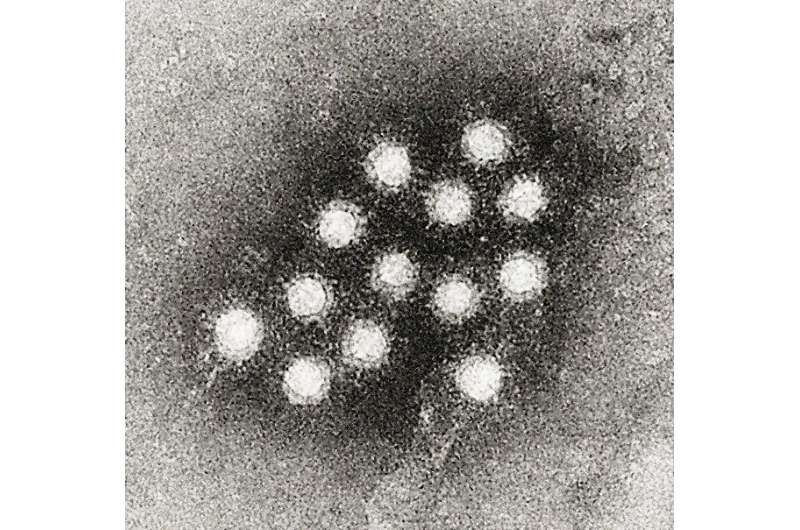Team identifies how hepatitis A virus causes liver injury

Hepatitis researchers have long thought that immune cells sent by the body to attack virus-infected cells in the liver cause the acute liver injury associated with hepatitis A virus (HAV) and other hepatitis viruses. Yet, investigators at the University of North Carolina at Chapel Hill have discovered that it is an immediate, intrinsic response of the HAV-infected cell that results in liver inflammation. These results were published in the journal Science.
"The virus evokes a response in the infected cell that activates a pre-programmed cell death pathway," said Stanley Lemon, M.D., one of the study's authors and a professor of medicine at UNC's School of Medicine and UNC's Institute for Global Health & Infectious Diseases. "In effect, the cell commits suicide, sacrificing itself along with the virus in an effort to save the host. This results in inflammation within the liver that we recognize as hepatitis."
Hepatitis A virus is a vaccine preventable form of infectious hepatitis. HAV is found worldwide and is transmitted through ingestion of food and water that is contaminated with the feces of an infected person. Frozen strawberries used in drinks at a smoothie chain led to a hepatitis A outbreak this summer in seven states.
Symptoms of hepatitis A include nausea, stomach pain, fever, sore throat, headache and diarrhea. People infected with HAV may not experience any symptoms, but shed the virus for two to four weeks. During this period, an infected person can pass the virus to others. HAV does not cause chronic liver disease like hepatitis B and C viruses. But in rare cases, it can cause acute liver failure, which is often fatal.
In addition to identifying how the virus causes acute liver injury, the UNC team, along with colleagues at North Carolina State University, established a new animal model of infection with the virus. For decades, researchers believed only primates – humans, chimpanzees and a few species of monkeys – could be infected by HAV. However, when the team interrupted the intrinsic cellular antiviral response in mice, they discovered the virus could jump species.
"The ability of the virus to jump into mice is dependent upon knocking out the mouse interferon system, which HAV cannot do on its own," said Lemon. "Host species jumps are incredibly important for viral emergence, and the factors that control the odds of this happening are not well known. We have defined the host interferon system as a very important barrier to a host species jump."
The UNC research team, led by Lemon and Jason Whitmire, Ph.D., Associate Professor in UNC's Department of Genetics, is now poised to investigate the complicated interplay of nonspecific "innate" and specific "adaptive" immune responses that ultimately control the infection and eliminate HAV from the host – processes that are not well understood for any of the five human hepatitis viruses.
More information: MAVS-dependent host species range and pathogenicity of human hepatitis A virus, Science 15 Sep 2016, DOI: 10.1126/science.aaf8325 , science.sciencemag.org/content … 9/13/science.aaf8325
















